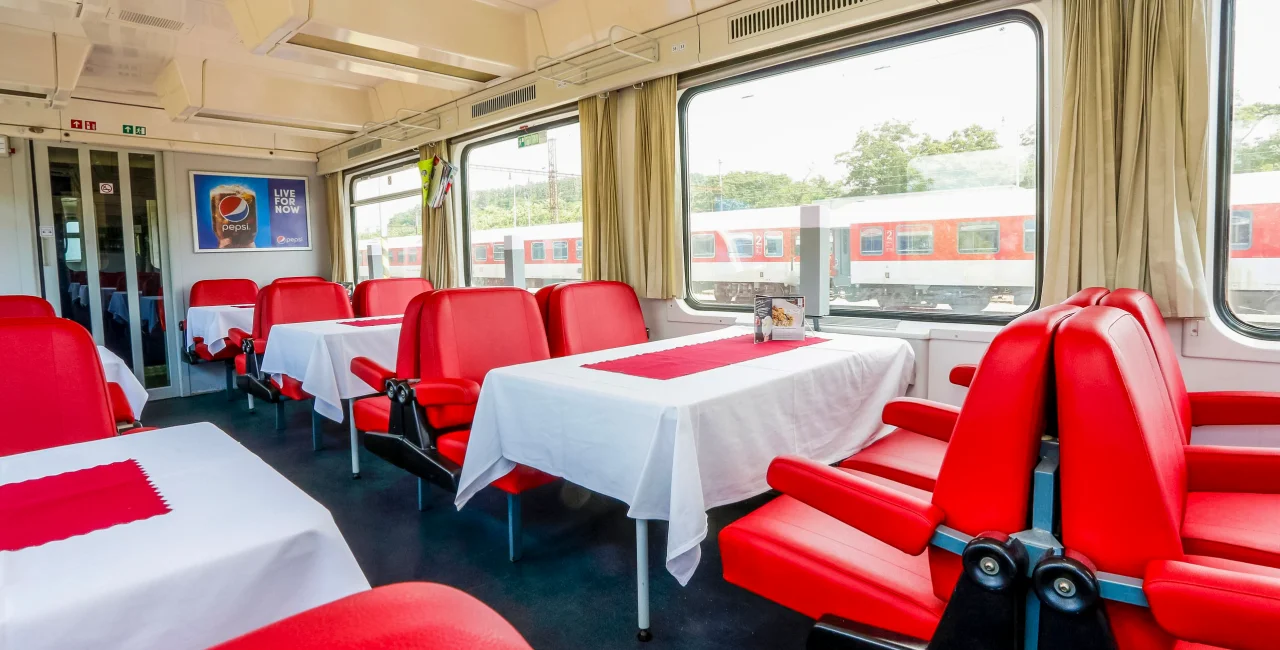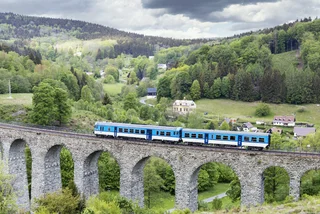Old-fashioned dining carriages on national railway carrier České dráhy (ČD) trains that connect Prague with Berlin will soon become the very concept they try to emulate—a thing of the past.
Known affectionately as the "Knödelexpress" by German travelers, these old-school dining cars serve traditional Czech dishes like svíčková na smetaně (sirloin roast with dumplings) and jablečný závin (apple strudel) on white tablecloths, evoking the charm of 1900s Czech pub, international magazine The Economist writes. However, this cherished tradition is about to end due to changes in fleets.
In 2024, ČD began replacing its EuroCity trains on the Prague-Berlin route with modern “ComfortJet” trains, due to be complete in 2026. While the upgrades bring faster speeds, improved accessibility, and high-tech amenities, they will also phase out the current carriages in favor of smaller, modern bistro cars.
The Knödelexpress dining cars are renowned for their atmosphere and service, describes The Economist. Uniformed waitstaff deliver meals prepared by an onboard chef while passengers sit on red faux-leather seats among frosted-glass lamps and white tablecloths.
The magazine describes how onboard conversations often include tips on how to save money by ordering meals on the Czech side of the border, where prices are lower. For instance, svíčková na smetaně costs about CZK 220 in the Czech Republic but jumps to EUR 13 (CZK 325) after crossing into Germany.
The Economist"The air is that of an old-world hospoda [pub] in Prague, where time stopped in the early 20th century."
The new ComfortJet trains, manufactured by German company Siemens and Czech firm Škoda feature wireless mobile phone chargers, better wheelchair access, and tactile buttons for visually impaired passengers.
Designed with efficiency in mind, the new bistro cars will seat just 18 passengers, down from 30 in the current setup. They will also employ “chilled food technology” and convection ovens, eliminating the need for an onboard chef.
New ComfortJet cars will reach speeds of up to 230 kilometers per hour (km/h), surpassing the original 200 km/h but still insufficient for routes like Berlin-Hamburg and the planned Copenhagen extension.
Starting in 2026, new dining cars will also be introduced on cross-border routes from Prague to Austria, Slovakia, and Hungary.
The new cars reflect trends like table service in first class and hot meal options for second-class passengers, ČD says. They will serve hot and cold beverages, food, and draft beer.
For railway dining enthusiasts seeking an old-fashioned experience, Hungarian and Polish trains (Tópart InterCities and the Adria InterCity for the former, EuroCity for the latter) continue to offer traditional dining cars with regional specialties like goulash and pierogi.












 Reading time: 2 minutes
Reading time: 2 minutes 

























